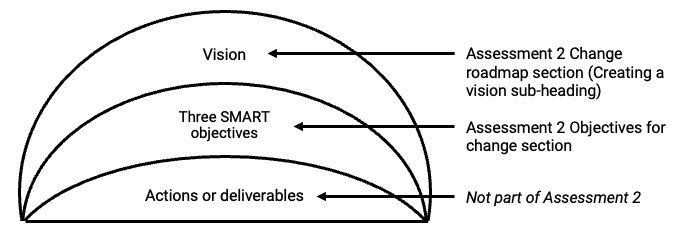Health Organisations PHCM9391
- Subject Code :
PHCM9391
PHCM9391 Health Organisations, Strategy & Change
Assessment 2: Report and change plan
Student number
Z5641418
Organisation analysed
Headspace
Link to strategic document
URL
Statement on the use of generative A.I.
Select one seewww.student.unsw.edu.au/assessment/aiand the Common Questions about Assessment 2 page on Moodle for more detail
I used no A.I. assistance to prepare this assessment.
I used simple editing assistance (non-A.I.) to prepare this assessment.
I used A.I. for planning/design assistance to prepare this assessment.
Overall word count
XXX words
Description of the organisation, its context and factors affecting performance
|
Delete this text box from your submitted assessment Description of the organisation, its context and factors affecting performance (up to 300 words) Describe the health organisation, its context, and the factors affecting its performance. This section can be up to 300 words in length. You can draw on your insights from Assessment 1, from the organisations strategic document, as well as undertaking additional research. Sources should be cited using references. You should not simply copy the description of the organisation from Assessment 1; it is important to describe the organisations context and the factors that affect its performance. |
Text (up to 300 words)
Most important issues for the organisation
|
Delete this text box from your submitted assessment Most important issues (up to 500 words)
Describe the most important strategic issues for the organisation, with individual justification of why each one is important. This section can be up to 500 words in length. You can draw on your insights from Assessment 1, from the organisations strategic document, as well as undertaking additional research. Sources should be cited using references. You should not simply copy the factors identified in the SWOT analysis in Assessment 1. The purpose is to identify themost important issues, with individual justifications for whyeach oneis important for the organisation. The justifications need to be specific and linked to each issue is discussed. An overall justification for the importance of the listed issuesis not acceptable. There is no specific number of issues that are required. The purpose is to identify each one clearly and to provide a justification for their importance. |
Objectives for change
|
Delete this text box from your submitted assessment Objectives for change (up to 300 words) Give your overall change initiative a title/name, which will encompass the three objectives. This title should be brief, descriptive and comprehensible. Devise a list of three (3) objectives for change for the organisation to act upon. Each objective should each be SMART in nature specific, measurable, actionable, realistic, and timely. These objectives should be derived from the previous section on the most important opportunities and threats. References should be included where appropriate. You must use the sub-headings provided in the template below. Please note: each of the SMART objectives should relate to something that you plan to achieve; they should not be specific actions or deliverables. The vision should be described in theChange roadmapsection below (see diagram).
SMART objectives will be discussed during a tutorial in the course. |
Title for the overall change initiative:
Title/name for change initiative (up to 300 words for the objectives for change section in total, i.e. across the title and three objectives)
Objective 1:
Text of the objective (up to 300 words for the objectives for change section in total, i.e. across the title and three objectives)
Objective 2:
Text of the objective (up to 300 words for the objectives for change section in total, i.e. across the title and three objectives)
Objective 3:
Text of the objective (up to 300 words for the objectives for change section in total, i.e. across the title and three objectives)
Change roadmap
|
Delete this text box from your submitted assessment Change roadmap (up to 900 words) Develop a change roadmap for the organisation, describing what is needed to achieve the objectives you identified in the previous section. You must use the eight sub-headings provided in the template below, which are drawn from KottersEight Steps to Transforming Your Organisation. Please note: The change roadmap applies to your change initiative as a whole(the title and three objectives you described above) you dont need to address each of the three objectives under each of the eight headings below. The vision is distinct from the SMART objectives you described in theObjectives for Changesection above (see diagram).
References should be included where appropriate. Kotters Eight Steps to Transforming Your Organisation are covered in Module 3: Change and are described in the readings for Module 5.1. |
Establishing a sense of urgency
Text (up to 900 words for the change roadmap section in total, i.e. across all eight steps)
Forming a powerful guiding coalition
Text (up to 900 words for the change roadmap section in total, i.e. across all eight steps)
Creating a vision
Text (up to 900 words for the change roadmap section in total, i.e. across all eight steps)
Communicating the vision
Text (up to 900 words for the change roadmap section in total, i.e. across all eight steps)
Empowering others to act on the vision
Text (up to 900 words for the change roadmap section in total, i.e. across all eight steps)
Planning and creating short term wins
Text (up to 900 words for the change roadmap section in total, i.e. across all eight steps)
Consolidating improvements while producing still more change
Text (up to 900 words for the change roadmap section in total, i.e. across all eight steps)
Institutionalising new approaches
Text (up to 900 words for the change roadmap section in total, i.e. across all eight steps)
Reference list
|
Delete this text box from your submitted assessment Reference list Up to 25 references, using Vancouver or APA referencing styles. Reference lists are not included in overall word limits. |


